On a fine spring-like day, Robert Gilchrist and John Sleigh visited the Biffen family at Arnage near Ellon.
“It has been a long, wet winter, but since the cold and snow passed, the weather has started to improve,” said Andrew.
However, he went on to say if you have grass on the farm in March, you had better graze it, as the unpredictable Scottish climate could mean the grass might be gone by April.
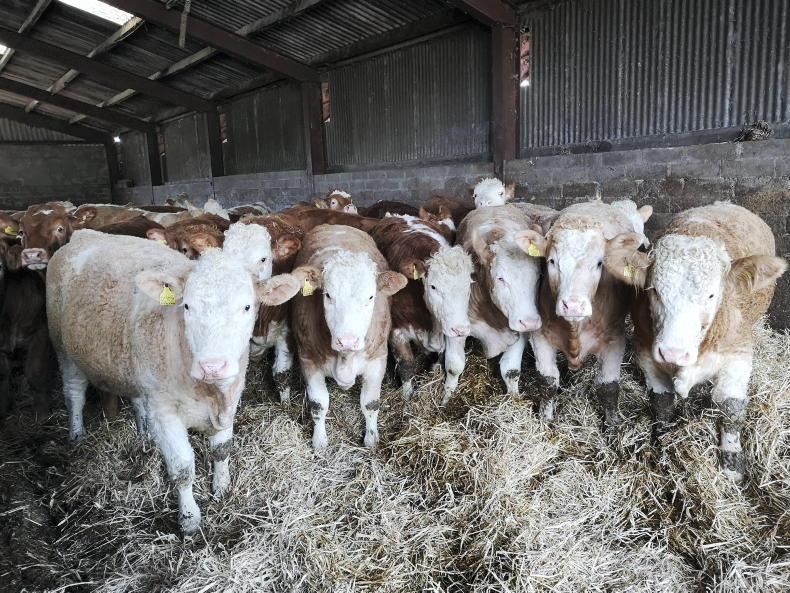
Andrew plans to sell all Limousin or Simmental young stock that are over 450kg liveweight. The first batch will be away later this week with the rest being sold in April.
Sheep on fodder beet
The 191 ewes and 84 ewe lambs were scanned three weeks ago, with an overall result of 171% (detailed results are in the table below). The 21 empties have been moved off and the remaining 254 are running on the fodder beet for now. They are currently eating three 120m strips of beet and 220kg of silage per day, along with free access to mineral tubs.
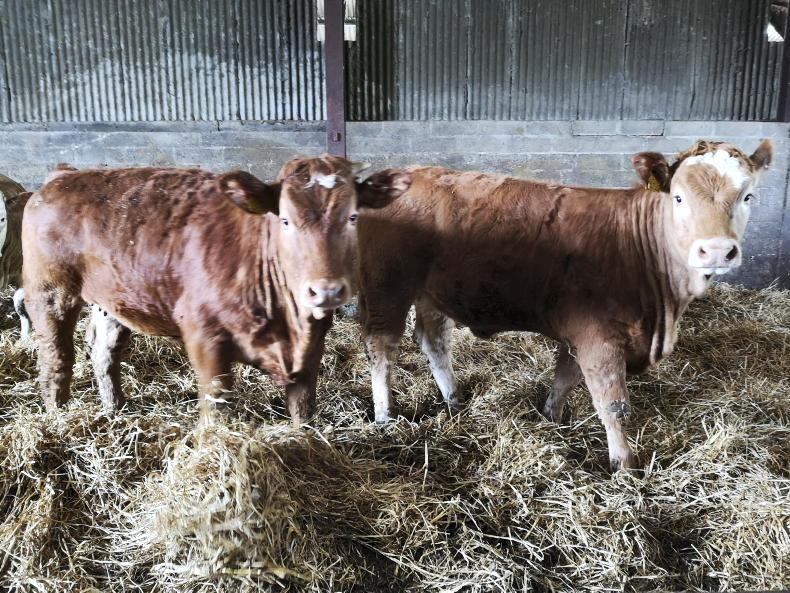
Andrew plans to sell all Limousin or Simmental young stock that are over 450kg liveweight. The first batch will be away later this week with the rest being sold in April.
Fiona has measured out what they are eating, and this should last them until the middle of March. At this point, they will be moved on to the silage ground to graze it out before going into their lambing paddocks. The ewes are mainly Logie Durno composites out of a mule mother.
Lambing starts mid-April, so the diet will be changing six weeks prior. An 18% protein ewe roll will be introduced for the ewe lambs and adult sheep carrying two or more lambs.
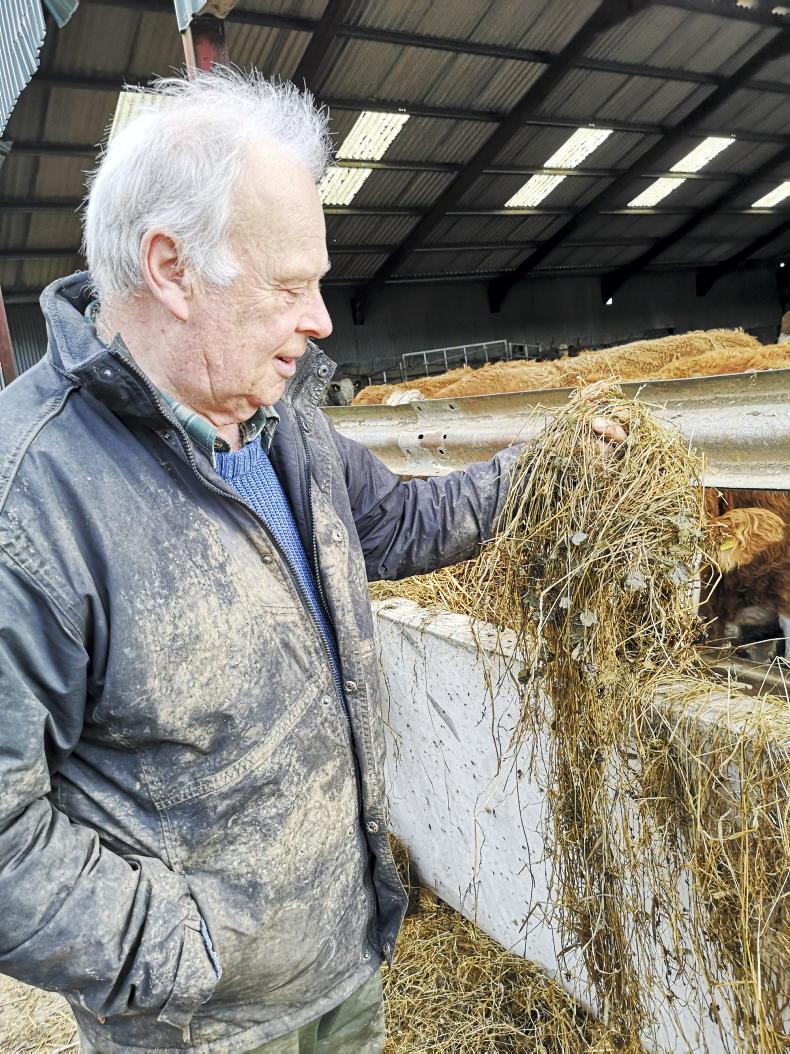
Andrew is pleased the quality of the silage especially the amount of clover.
The ewes will start on 0.5kg each, going up to 1kg each in the weeks before lambing. All pregnant sheep are to be Heptavaced pre-lambing.
Cows coming to calving
A batch of 17 later spring-calving cows and a bull are also grazing fodder beet, along with baled silage.
They are on two 190m lengths of beet per day plus ad-lib silage. So far, they have averaged around one bale of silage per week plus a precalver mineral.
“I’m a bit disappointed, as the beet hasn’t yielded as well as it did last year,” says Andrew.
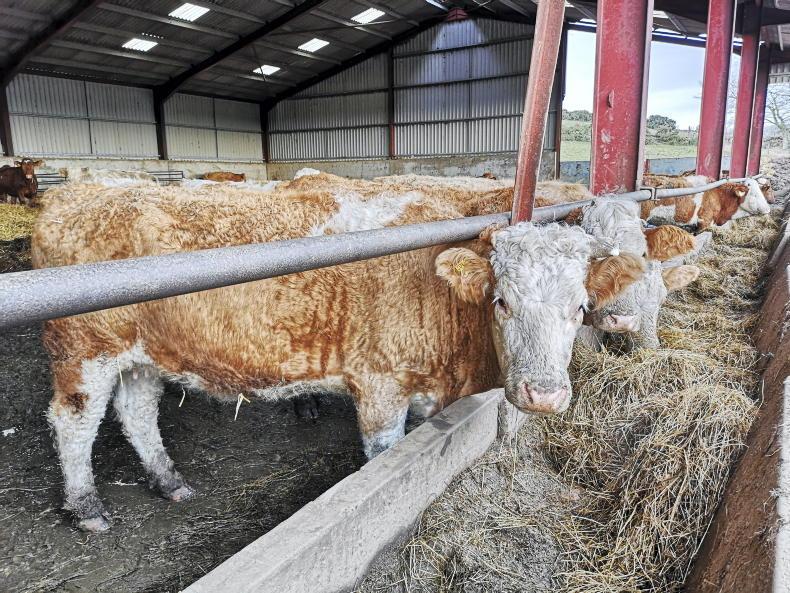
Cows will start calving in early March and have been wintered on a diet of fodder beet, straw and silage.
“Frosts down to -13°C have had an impact on the leaf, which didn’t happen last winter. However, the utilisation has been good in the field and we also lifted 7ac for feeding to cows inside.”
The cows are on a diet of treated straw and bought silage in the runup to calving in March.
Andrew bought the straw for treating at harvest, which he has worked out to be close to £20/bale.
Watching the weather earlier in winter, Andrew decided to purchase some silage too, and at the moment, he is being delivered good cow silage for £10/bale, which he says is great value.
Selling stores
The Biffens have earmarked a batch of 20-25 bigger stores for the next sale at Thainstone. This will allow more space in the sheds, as calving fast approaches. Historically, cashflow has driven cattle sales through the year, but now with a healthier bank balance, this is not the case.
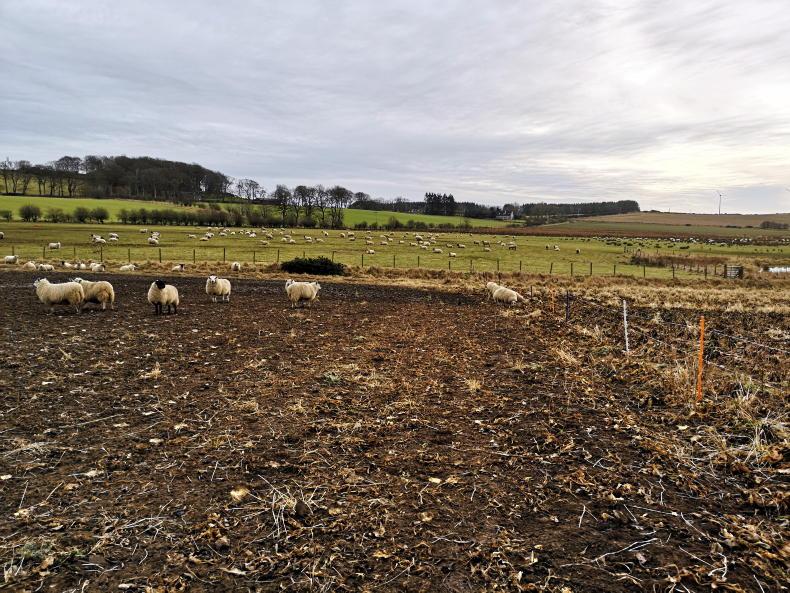
The ewes have eaten 5ac of fodder beet in the last month.
The cattle were selected from 54 of the spring 2020-born Limousin and Simmental calves. The cattle have been wintered on a diet of silage and barley mixed with a protein pellet.
On a fine spring-like day, Robert Gilchrist and John Sleigh visited the Biffen family at Arnage near Ellon.
“It has been a long, wet winter, but since the cold and snow passed, the weather has started to improve,” said Andrew.
However, he went on to say if you have grass on the farm in March, you had better graze it, as the unpredictable Scottish climate could mean the grass might be gone by April.

Andrew plans to sell all Limousin or Simmental young stock that are over 450kg liveweight. The first batch will be away later this week with the rest being sold in April.
Sheep on fodder beet
The 191 ewes and 84 ewe lambs were scanned three weeks ago, with an overall result of 171% (detailed results are in the table below). The 21 empties have been moved off and the remaining 254 are running on the fodder beet for now. They are currently eating three 120m strips of beet and 220kg of silage per day, along with free access to mineral tubs.

Andrew plans to sell all Limousin or Simmental young stock that are over 450kg liveweight. The first batch will be away later this week with the rest being sold in April.
Fiona has measured out what they are eating, and this should last them until the middle of March. At this point, they will be moved on to the silage ground to graze it out before going into their lambing paddocks. The ewes are mainly Logie Durno composites out of a mule mother.
Lambing starts mid-April, so the diet will be changing six weeks prior. An 18% protein ewe roll will be introduced for the ewe lambs and adult sheep carrying two or more lambs.

Andrew is pleased the quality of the silage especially the amount of clover.
The ewes will start on 0.5kg each, going up to 1kg each in the weeks before lambing. All pregnant sheep are to be Heptavaced pre-lambing.
Cows coming to calving
A batch of 17 later spring-calving cows and a bull are also grazing fodder beet, along with baled silage.
They are on two 190m lengths of beet per day plus ad-lib silage. So far, they have averaged around one bale of silage per week plus a precalver mineral.
“I’m a bit disappointed, as the beet hasn’t yielded as well as it did last year,” says Andrew.

Cows will start calving in early March and have been wintered on a diet of fodder beet, straw and silage.
“Frosts down to -13°C have had an impact on the leaf, which didn’t happen last winter. However, the utilisation has been good in the field and we also lifted 7ac for feeding to cows inside.”
The cows are on a diet of treated straw and bought silage in the runup to calving in March.
Andrew bought the straw for treating at harvest, which he has worked out to be close to £20/bale.
Watching the weather earlier in winter, Andrew decided to purchase some silage too, and at the moment, he is being delivered good cow silage for £10/bale, which he says is great value.
Selling stores
The Biffens have earmarked a batch of 20-25 bigger stores for the next sale at Thainstone. This will allow more space in the sheds, as calving fast approaches. Historically, cashflow has driven cattle sales through the year, but now with a healthier bank balance, this is not the case.

The ewes have eaten 5ac of fodder beet in the last month.
The cattle were selected from 54 of the spring 2020-born Limousin and Simmental calves. The cattle have been wintered on a diet of silage and barley mixed with a protein pellet.











 This is a subscriber-only article
This is a subscriber-only article











SHARING OPTIONS: